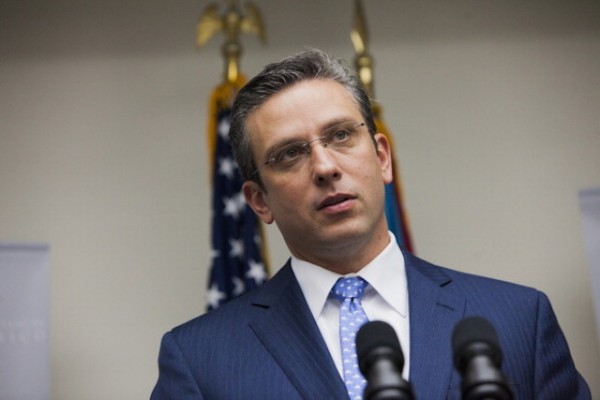(Reuters) - Tumbling oil prices may offer short-term relief to Puerto Rico's struggling electric power authority PREPA, but could embolden bondholders and muddy the utility's path to a long-term fix.
Crude's slide may give bondholders more sway in negotiating a restructuring of the utility because a sharp drop in its fuel costs gives them less reason to accept reduced debt repayments.
While fixing PREPA is seen as a key step in solving the troubled island's debt problems, cheaper oil could create the perception that the power authority may not need a broad, and expensive, overhaul.
"Bondholders may be emboldened, but on the other hand, the need for up-front capital may now be less," said restructuring expert Suzzanne Uhland, a partner at law firm O'Melveny & Myers, in San Francisco. She said low oil prices reduced the pressure on the power utility to diversify its fuel sources.
PREPA, the quasi-public provider of electricity to Puerto Rico's roughly 3.5 million residents, charges consumers around double the average customers pay in the U.S. mainland. With debt of around $9 billion, it is under pressure to convert to generally cheaper and cleaner natural gas.
However, oil's 60 percent slide since June means the savings are less obvious. U.S. natural gas prices have fallen around 40 percent in the same period. Some now question the benefits of such a conversion and are more concerned with persuading PREPA to use a potential oil windfall to service debt, sources on the creditor side say.
"Is natural gas really the best way to solve the problem?" said one person in the utility's creditor community. "We don't want (PREPA) to invest in big assets unnecessarily."
Some warn, however, that while forgoing the natural gas conversion could save significant upfront costs, it would leave the utility at risk if oil rises again. While the drop in prices should ultimately benefit PREPA, one source said, it may result in a less comprehensive restructuring than the utility may have initially expected.
Replacing the generation units could cost up to $4 billion, according to one hedge fund considering investing in PREPA. Other people in the discussions say the capital expenditure amount PREPA's chief restructuring officer, Lisa Donahue, could propose is not fixed yet, and could be as low as $2.5 billion.
PREPA did not immediately respond to a request for comment.
CONSUMER BENEFIT
The oil fall also raises a question whether to use the benefits to pay down debt or pass all the savings on to consumers. Donahue said in December that under PREPA'S current system, the impact of oil would be neutral.
"The price of oil is a direct pass through to customers," Donahue told a news conference. "You pay less for fuel upfront but bills are lower."
Some creditors may push for higher tariffs, with one source calling the current pricing structure “archaic.”
Donahue is yet to present a long-term plan for the utility. Last month she said it would take 10 years to turn around the utility, not the five years originally thought, as she presented a progress report which did not include recommendations.
"Donahue will recommend building completely new generation units, which is much more expensive, but is necessary because the current technology is just too old and inefficient," said the hedge fund.
Donahue has said the utility is examining multiple scenarios on how to improve generation, including retrofitting units, using dual fuel or buying units to increase efficiency.
Under a forbearance agreement with lenders and bondholders, the utility has until March 2 to form the debt restructuring plan. People close to the matter say that deadline could be extended. The hedge fund source cited June as a possible target.
BONDHOLDER SWAY
Under a typical restructuring, PREPA would be expected to try to finance the conversion to natural gas in part by reducing repayments to bondholders.
With oil prices high, PREPA had more leverage to justify a haircut, but the crude's slide may encourage some creditors to demand full payment.
"I assume bondholders try their best to flex their muscles after the oil price fall," said David Tawil, president of Maglan Capital, a hedge fund that specializes in distressed investments. Tawil sold out of his Puerto Rico exposure last year.
Eventually, a compromise may be possible. But the drop in oil prices mean sides could start further apart, say some insiders and experts, making for a longer, messier fight.
"The move in the price of oil absolutely should impact what's happening at the negotiating table," said one financial source. "The only thing that has changed in PREPA's negotiating is everything."
(Additional reporting by Reuters in San Juan; Editing by
Tomasz Janowski)
By Nick Brown and
Megan Davies
Cheaper oil muddies path to Puerto Rico power fix

